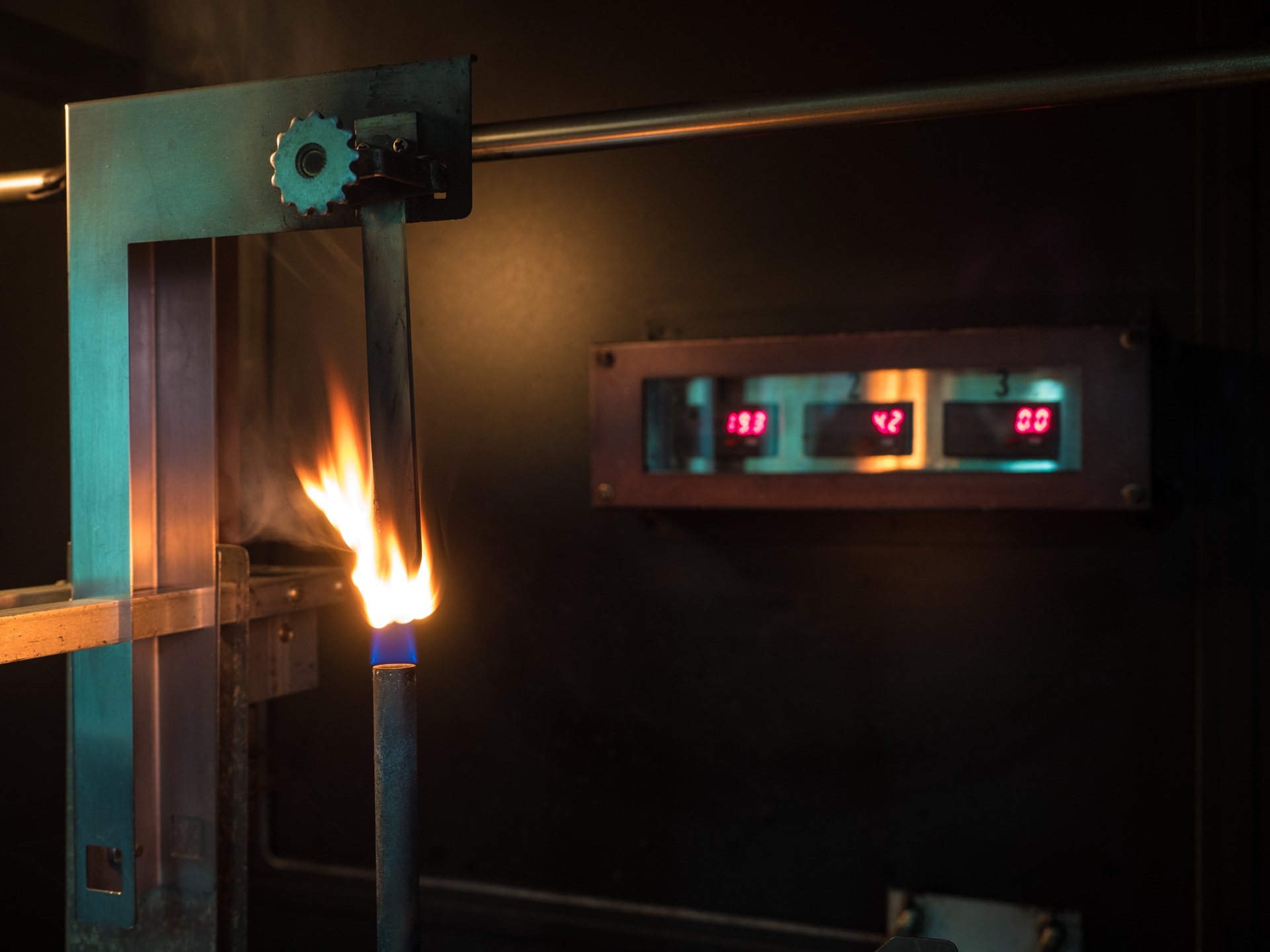Flammability Testing for Acoustic Materials: Ensuring Safety in Thermal-Acoustic Solutions
When selecting materials for noise control and acoustic engineering, performance isn't the only consideration—safety is paramount. Flammability testing evaluates how materials behave when exposed to fire, ensuring compliance with stringent safety standards while maintaining effective acoustic and thermal performance.
In industries like automotive, aerospace, construction, and electronics, where materials must meet specific fire resistance criteria, flammability testing is a critical part of the material selection process.
What is Flammability Testing?
Flammability testing assesses a material’s reaction to fire, measuring characteristics such as ignition resistance, flame spread, smoke production, and heat release. These tests determine how quickly a material ignites, whether it sustains burning, and how much it contributes to fire propagation.
Common test methods include:
- Vertical Burn Test: Measures how materials react to flames applied vertically, commonly used in automotive and aerospace industries.
- Horizontal Burn Test: Evaluates flame spread and self-extinguishing properties when the material lies horizontally.
- Cone Calorimeter Test: Measures heat release rates, smoke production, and combustion gases under controlled conditions.
Why Flammability Testing is Critical for Thermal-Acoustic Materials
Thermal-acoustic materials are often used in applications where fire safety is non-negotiable, such as:
- Automotive: Cabin interiors, engine insulation, and underbody components must meet fire safety standards to protect passengers during accidents.
- Aerospace: Aircraft require materials with high flame resistance and minimal smoke production to enhance passenger safety and comply with strict regulations.
- Construction: Insulation and acoustic panels must resist ignition and limit flame spread to safeguard building occupants.
- Electronics: Materials used in devices must prevent electrical fires while maintaining thermal and acoustic performance.
Flammability testing ensures these materials meet regulatory standards while maintaining their intended functional properties, such as sound attenuation and thermal insulation.
How Flammability Testing Works
Flammability testing procedures vary based on the material type, application, and industry standards. Common steps include:
- Sample Preparation: Materials are cut and conditioned according to specific test protocols to ensure consistency.
- Exposure to Fire: Samples are subjected to controlled flames, heat, or sparks under standardized conditions.
- Measurement: Key metrics such as time to ignition, flame spread, smoke density, and residue are recorded.
- Analysis and Certification: Results are compared against industry standards, such as FMVSS 302 (automotive), FAR 25.853 (aerospace), or ASTM E84 (construction).

Benefits of Flammability Testing in Acoustic Engineering
- Regulatory Compliance: Ensures materials meet fire safety standards for specific industries, reducing liability and enhancing marketability.
- Enhanced Safety: Reduces fire risk, protecting end-users and equipment in high-stakes environments.
- Material Optimization: Guides manufacturers in developing materials that balance fire resistance, noise control, and thermal performance.
- Improved Design Confidence: Flammability-tested materials enable engineers to design safer products with superior acoustic and thermal properties.
Where Flammability Testing is Conducted
Flammability testing is typically carried out in laboratories equipped with specialized fire testing equipment. These labs simulate real-world conditions to deliver accurate and reliable results. However, materials can also undergo onsite testing during product development and quality assurance phases to ensure consistent performance across manufacturing batches.
Combining Flammability Testing with Acoustic Performance
When selecting materials for noise control, flammability testing complements acoustic testing to ensure both safety and functionality. For example:
- Sound Barriers: Materials intended for sound blocking must also resist flame spread in environments like industrial plants or vehicle interiors.
- Damping Materials: Products that minimize vibrations and structure-borne noise must meet fire resistance standards without compromising damping performance.
- Composite Materials: Laminated solutions that combine layers for sound absorption and thermal insulation must maintain fire safety while delivering effective noise and/or thermal control.
Conclusion: The Role of Flammability Testing in Material Safety and Performance
Flammability testing, such as what the Soundcoat R&D lab conducts, is an essential step in the development and selection of thermal-acoustic materials for noise control applications. By evaluating how materials behave under fire exposure, this testing ensures safety without sacrificing performance, enabling compliance with industry standards across automotive, aerospace, construction, and more.
For engineers and manufacturers, investing in flammability-tested materials is not just about meeting regulations—it’s about delivering safer, more reliable solutions for demanding applications.
